Artist Family Portrait - Mixed Media
"I am particularly drawn to collaborative art-making processes where people from different backgrounds and experiences come together to create something beautiful and meaningful. Through these collaborations I aim to foster a sense of community and mutual support where everyone can contribute their unique perspectives and skills."
Freestyle art represents a fascinating convergence of ancient symbolism and contemporary interpretation within the rich tapestry of human history. It is a language of its own inviting viewers on a profound journey through time and consciousness. From primal etchings to cave paintings to the intricate text forms of civilizations, humanity has communicated life's essence with lines and shapes. Freestyle art weaves narratives that transcend cultural divides and illuminate universal truths. Each mark of pigment is laden with meaning, forming a gestural symphony that speaks to the depths of emotion and the rhythms of existence. It is art celebrating life's infinite complexities, an exploration of the human condition, and a testament to the enduring legacy of artistic innovation across the ages.
“Ultimately, my art is a celebration of our shared humanity and a reminder that, no matter our challenges or differences, we can always find strength and healing through coming together."
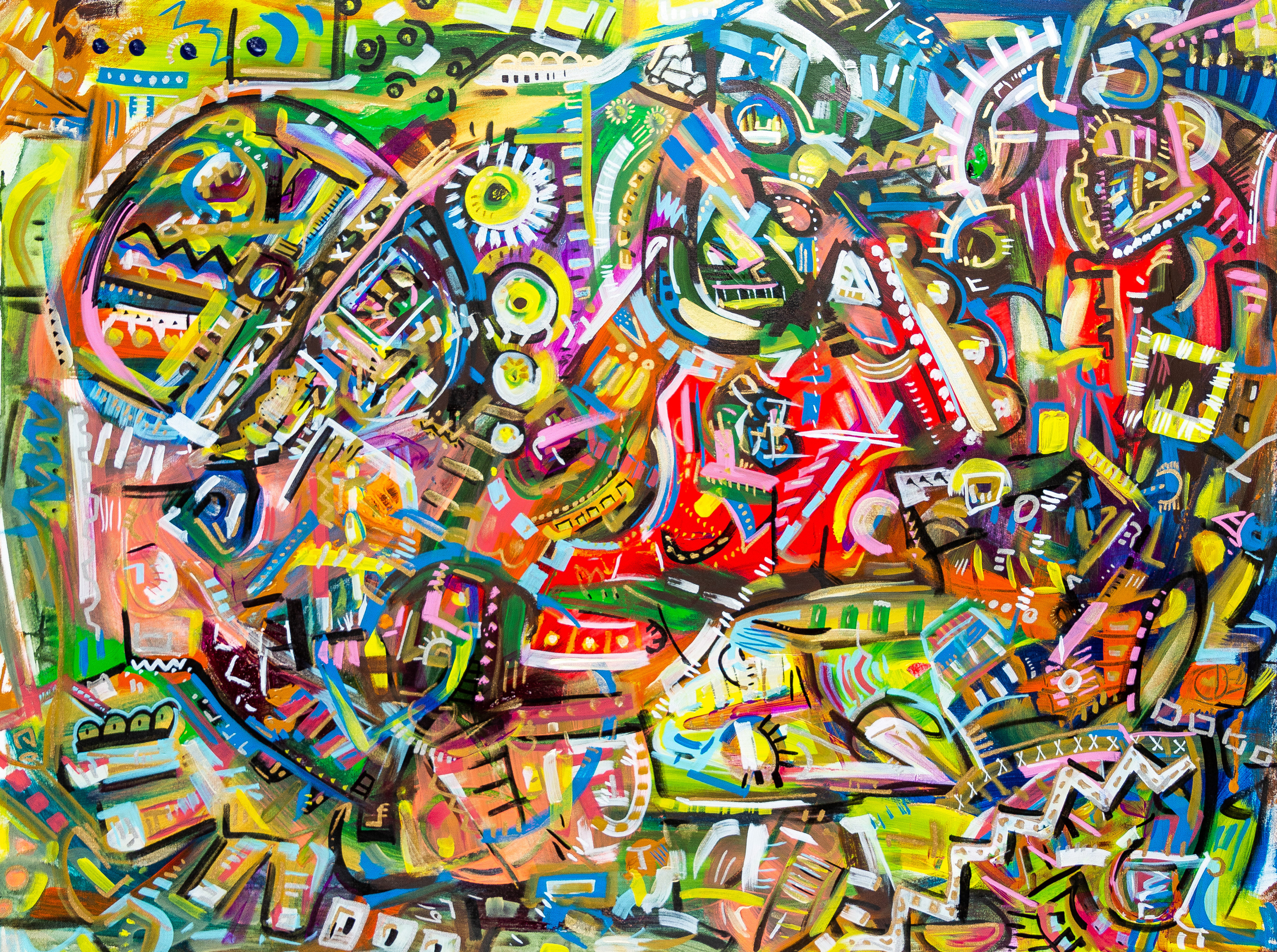
Artist Self Portrait
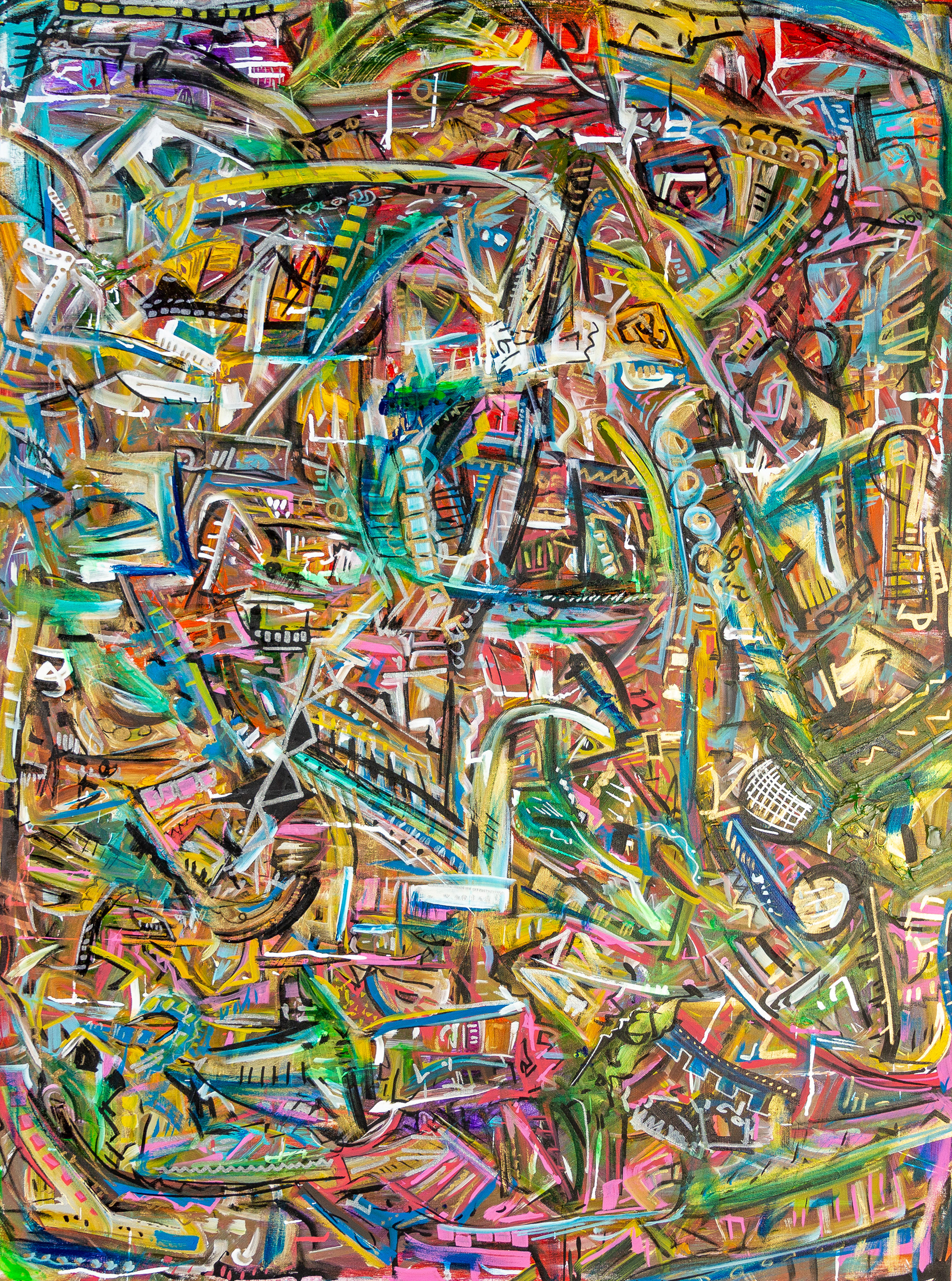
Live at Gallery 5
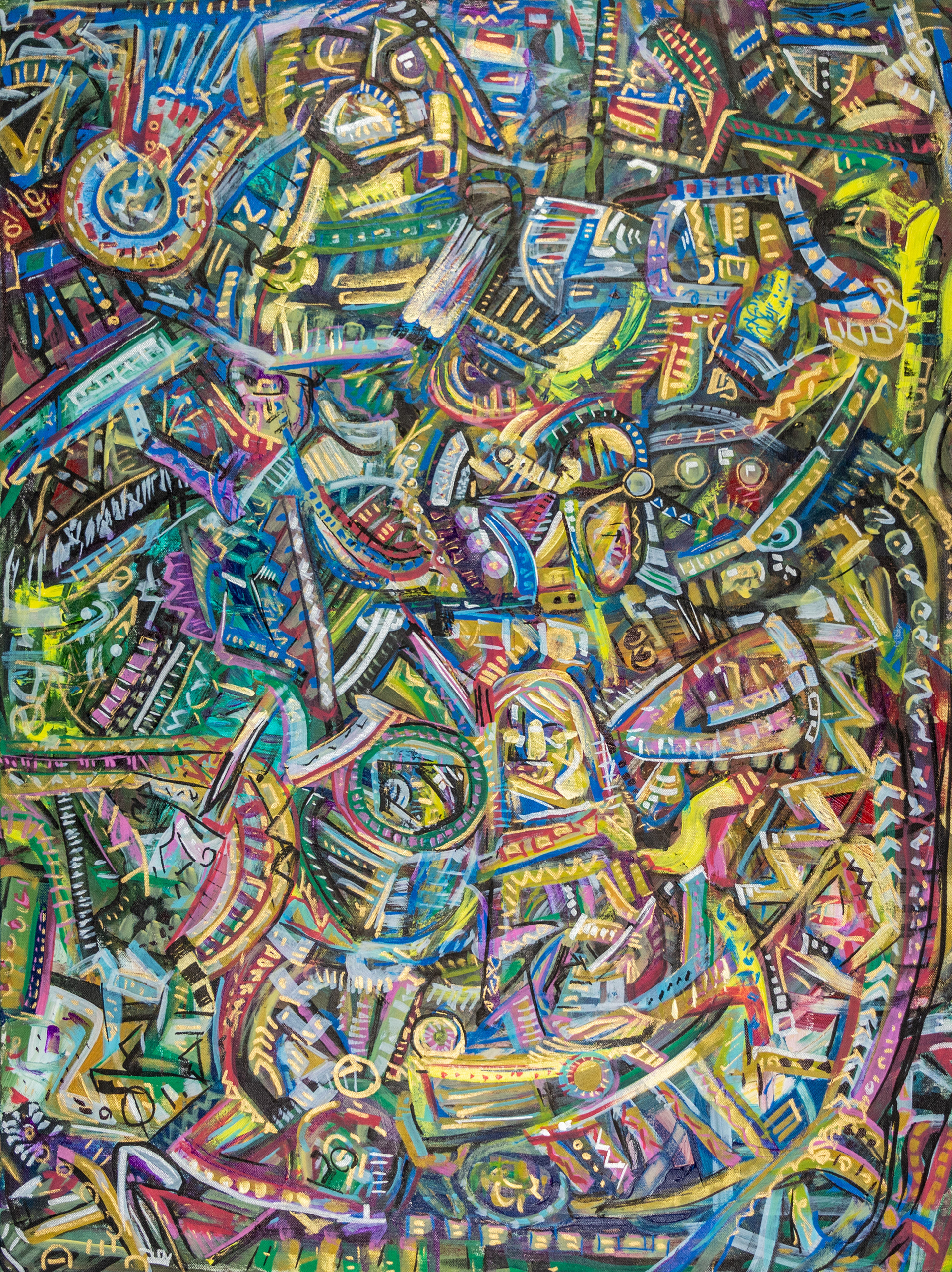
Moor Mothers

No BS 1
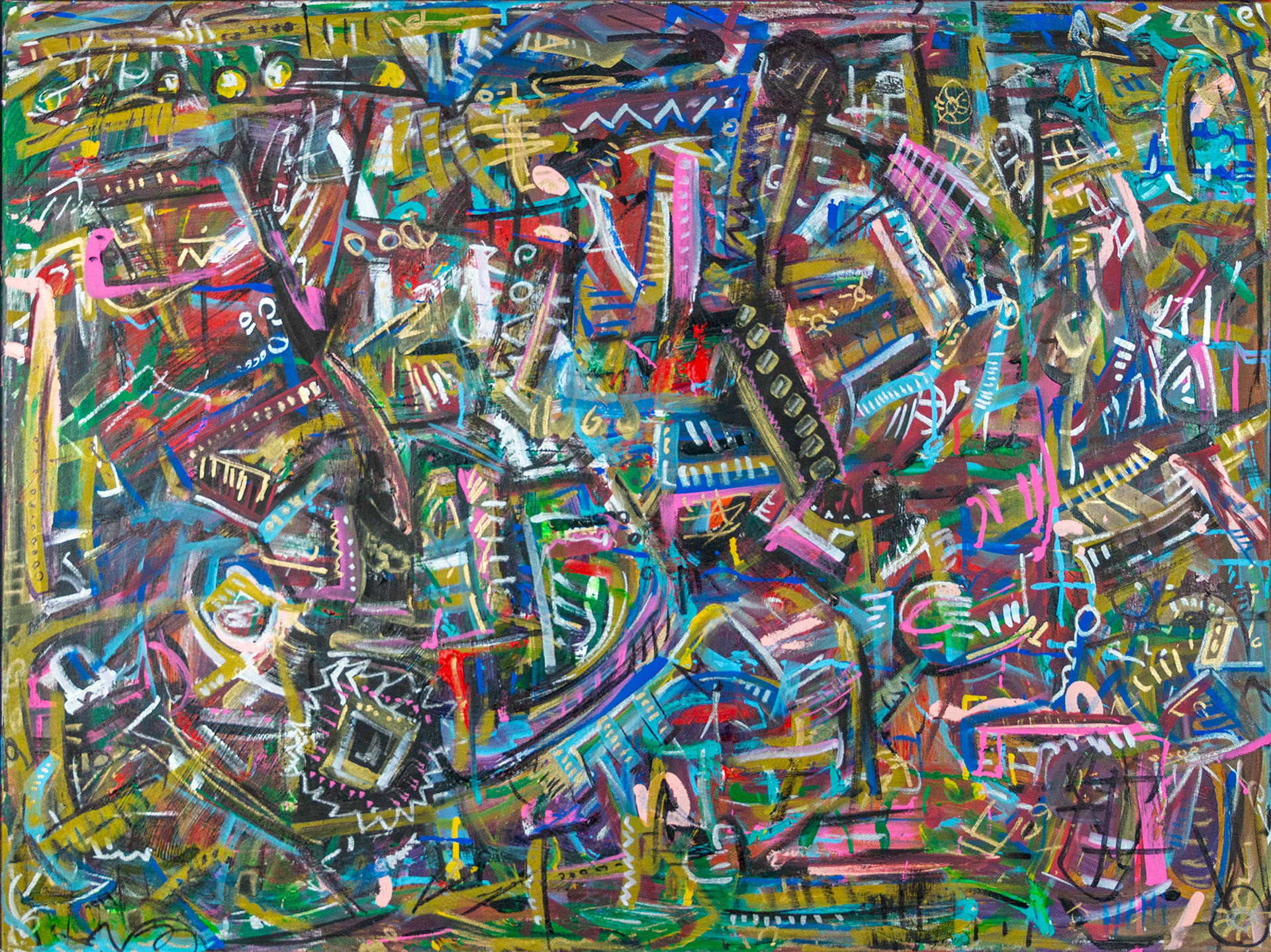
No BS 2
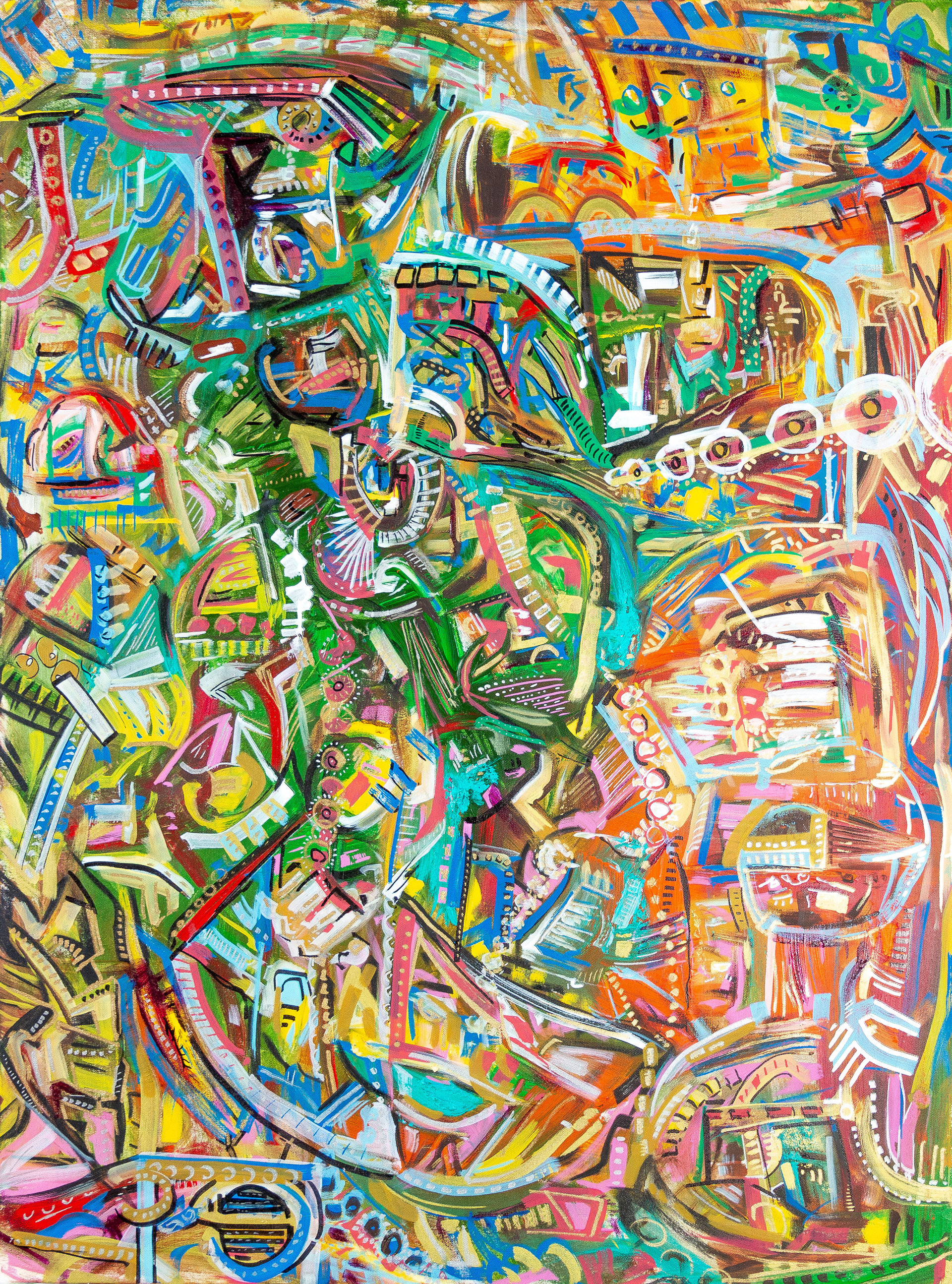
Lady Dancing with Family

Live at Tuesday Verses

Live at the Jackson Ward Black History Museum
The Language of Freestyle Art
In the realm of freestyle art, each mark, line, and shape holds profound symbolic meaning, serving as a conduit for expression and interpretation. Here are some additional insights into the symbolism of geometric shapes in freestyle art:
THE DOT, as the singular and first element, represents the beginning and end of the artistic journey. It signifies intent and serves as a focal point within the composition, drawing the viewer's attention to key elements or concepts.
While representing the beginning and end of the artistic journey, the dot also signifies concentration and focus. In some interpretations, the dot serves as a symbol of the individual consciousness or the nucleus of creative energy within the artwork. It can also represent the concept of singularity and the unity of all creation.
THE LINE embodies movement and activity within the artwork. Whether upright, flat, ascending, descending, or a combination thereof, the line adds depth, texture, and rhythm to the composition. It can explain, divide, connect, and border elements within the artwork, serving as a visual language in its presence which the artist communicates with the viewer.
In addition to embodying movement and activity, the line can convey various emotions and narratives depending on its characteristics. A straight line may suggest stability and order, while a curved line might evoke fluidity and dynamism. Artists often use lines to guide the viewer's eye across the composition, creating visual rhythms and patterns that enhance the overall aesthetic experience.
THE TRIANGLE acts as a funnel, conductor or channel guiding the viewer's gaze and directing change. It symbolizes triads and trinities, representing the interconnectedness of elements within the composition. Like a compass, the triangle points and locates, offering a sense of direction and purpose to the artistic narrative.
Alongside directing change and symbolizing triads, the triangle is often associated with balance and harmony. Its three sides may represent the balance between mind, body, and spirit, or the interconnectedness of past, present, and future. Additionally, the triangle's pointed shape can evoke notions of aspiration and upward movement, signifying spiritual growth and enlightenment.
THE CIRCLE embodies fluidity and infinity within the artwork. It represents completion, unity, and wholeness, encapsulating the cyclical nature of existence. As a specific space in time, idea, or thought, the circle serves as a focal point, drawing the viewer's attention to the core concept or message conveyed by the artist.
Beyond representing completion and unity, the circle holds significance in various cultural and spiritual contexts. In many traditions, the circle symbolizes the cycle of life, death, and rebirth. It also embodies notions of eternity and the cyclical nature of existence. The circular form can be interpreted as representing the cosmos or the universe, encapsulating the interconnectedness of all living beings.
THE SQUARE OR RECTANGLE, with its structured and rigid form, symbolizes stability and balance within the artwork. It represents a window into the artist's vision, offering a solid foundation upon which creative ideas can be built. As a symbol of quartets and tetrads, it embodies order and organization, providing a sense of structure to the composition.
The square or rectangle often represents human-made structures and architecture. Its angular lines may evoke feelings of orderliness and rationality. Furthermore, the square can be associated with the earth element, representing grounding and practicality.
Organic shapes in freestyle art carry rich symbolism that reflects the natural world and human experience often mimicking the fluidity and dynamism found in nature. They may evoke the graceful curves of flowing rivers, the gentle sway of tree branches in the wind, or the undulating forms of clouds in the sky. In freestyle art, these shapes symbolize the ever-changing nature of life and the constant flux of existence.
The soft, rounded contours of organic shapes can evoke feelings of warmth, softness, and sensuality. These shapes may symbolize emotional depth, intimacy, and vulnerability inviting viewers to connect with the artwork on a visceral level, tapping into the universal language of emotion. Overall, spurring us to contemplate the mysteries of the natural world, explore the depths of human emotion, and connect with the universal rhythms of life.
Examples of Symbolism
The capital letter or single mark " I " means an individual person.
An exclamation or single line and dot " ! " marks a specific point or idea as important.
Zero " 0 " means complete nothingness.
" 1 + 0 = 10 " By adding zeros a greater number of infinites can be expressed.
The triangle " A " directs readers and listeners to a person, place, or thing in a sentence.
*The mathematical symbols " / " and " % " show division, fraction, and/or percentage of things.